Inside Titanic – step back in time with the 'Ship of Dreams'
Take a tour around the beautiful ill-fated ship
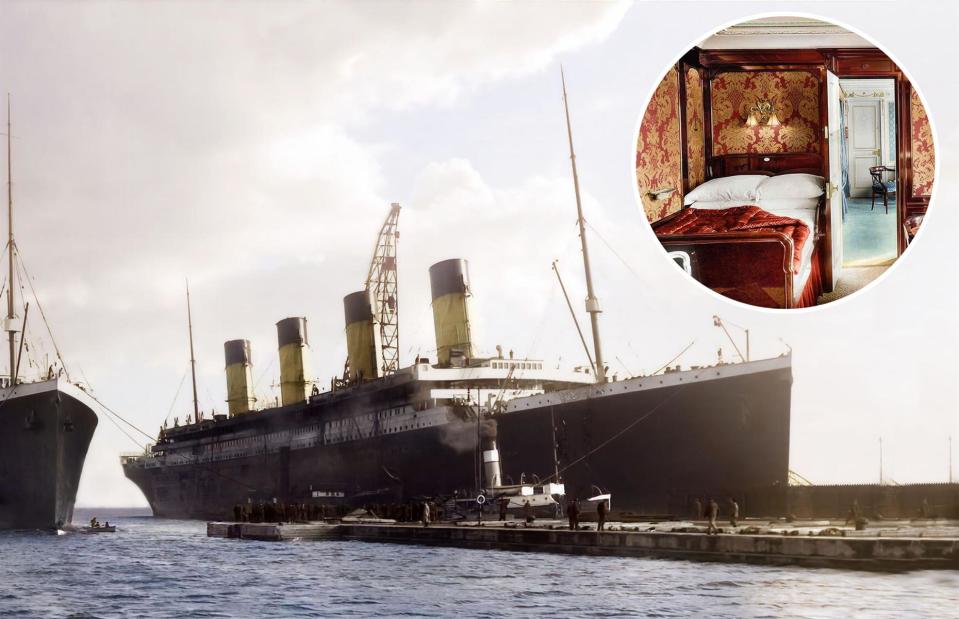
Ryan N / Alamy Stock Photo
Arguably the most famous ship in history, the RMS Titanic has been immortalised through books, films and theatre productions. But much of our enduring fascination with the Titanic fixates on her tragic end, overlooking the countless hours, industries and individuals who built ‘the Ship of Dreams'.
From intricate woodwork to luxury furniture, lustrous fixtures and stunning soft furnishings, master craftsmen created the feel of a world-class hotel and the ocean liner was filled with fabulous features intended to keep the super-rich passengers entertained.
Join us as we dive into the gilded halls of the RMS Titanic’s historic journey and uncover the secrets of its inner workings...
A world first
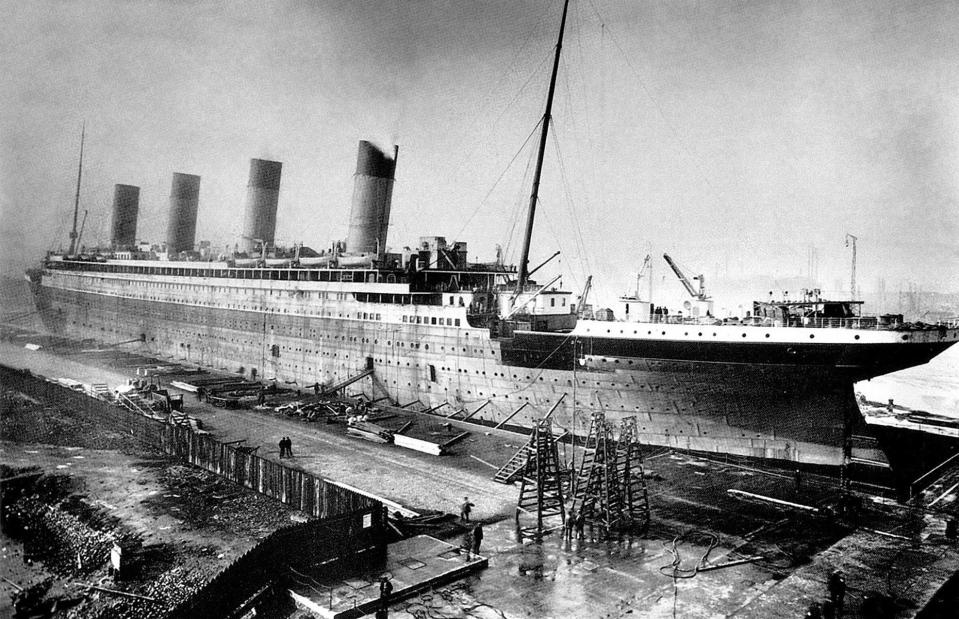
IanDagnall Computing / Alamy Stock Photo
The Edwardian era was considered the golden age of shipbuilding and, at 883 feet in length, the Titanic was the largest man-made moving object in the world and took more than 26 months from beginning to first launch. The entire ship was topped off by four towering 66-foot funnels, designed to ensure that the Titanic was the tallest ship on the ocean as well.
Who commissioned the Titanic?
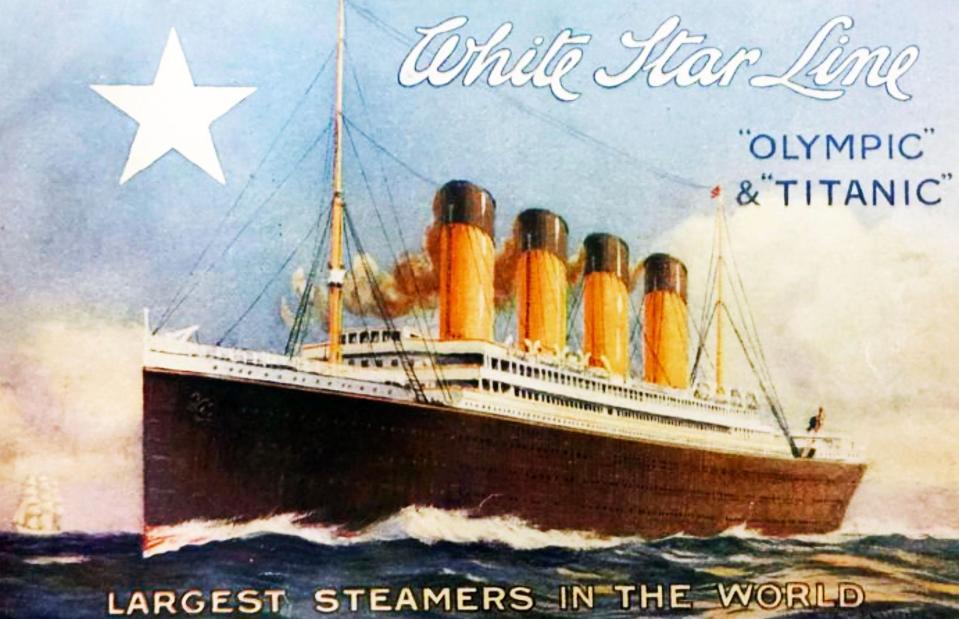
Pictorial Press Ltd / Alamy Stock Photo
At the turn of the 20th century, the White Star Line was one of the most prominent shipping companies in the world, operating both passenger and cargo services between the UK and the US. Fierce competition with the rival shipping company Cunard drove White Star Line’s chairman and managing director J Bruce Ismay to commission three new ocean liners, known as the Olympic-class ships, to surpass Cunard’s flagships Lusitania and Mauretania in size and luxury.
These were called the Olympic, completed in 1911; the Titanic, completed in 1912; and the Britannic, completed in 1914. Ismay partnered with William James Pirrie, President of the esteemed Harland & Wolff Shipyards in Belfast, to build all three vessels.
Harland & Wolff, the Titanic shipbuilders
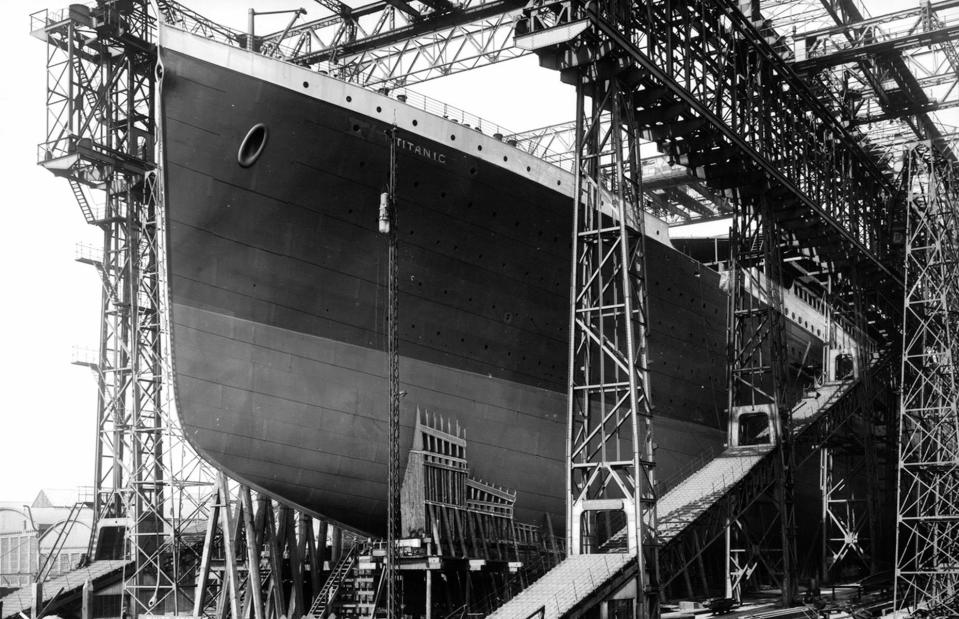
IanDagnall Computing / Alamy Stock Photo
At its peak, Harland & Wolff employed more than 30,000 people but it had never before taken on a project with the size and scale of the three Olympic ships. Indeed, despite having the largest shipyard in the world, they did not have a slipway big enough to accommodate the construction of the Olympic and the Titanic, which were built simultaneously, and had to convert three slipways into two larger ones to fit them both in.
Who designed the Titanic?
![<p>titanicbelfast / Wikimedia Commons [Public Domain] ; GRANGER - Historical Picture Archive / Alamy Stock Photo</p>](https://s.yimg.com/ny/api/res/1.2/A2NvGnpI3Q9Bm3oGV4.RJg--/YXBwaWQ9aGlnaGxhbmRlcjt3PTk2MDtoPTYxOQ--/https://media.zenfs.com/en/loveexploring_uk_835/27709a44943c2cfcc5f69f77eeb38930)
titanicbelfast / Wikimedia Commons [Public Domain] ; GRANGER - Historical Picture Archive / Alamy Stock Photo
The Titanic was primarily designed by Alexander Carlisle (pictured left), the chief naval architect at Harland & Wolff's Belfast yard. Although Thomas Andrews (pictured on the right), the chief draughtsman, is commonly credited, Carlisle designed all three liners, leaving an indelible mark on White Star Line vessels. Beginning as a premium apprentice at 16, Carlisle's influence shaped the iconic profiles of these liners, from the bridge design to the rake of the funnels.
Construction of the Titanic began on 31 March 1909. Unexpectedly, in June 1910, Carlisle resigned, and Thomas Andrews took charge. Andrews adhered meticulously to Carlisle's plans and designs, ensuring continuity in the signature style of White Star Line ships.
A cross-section of the Titanic
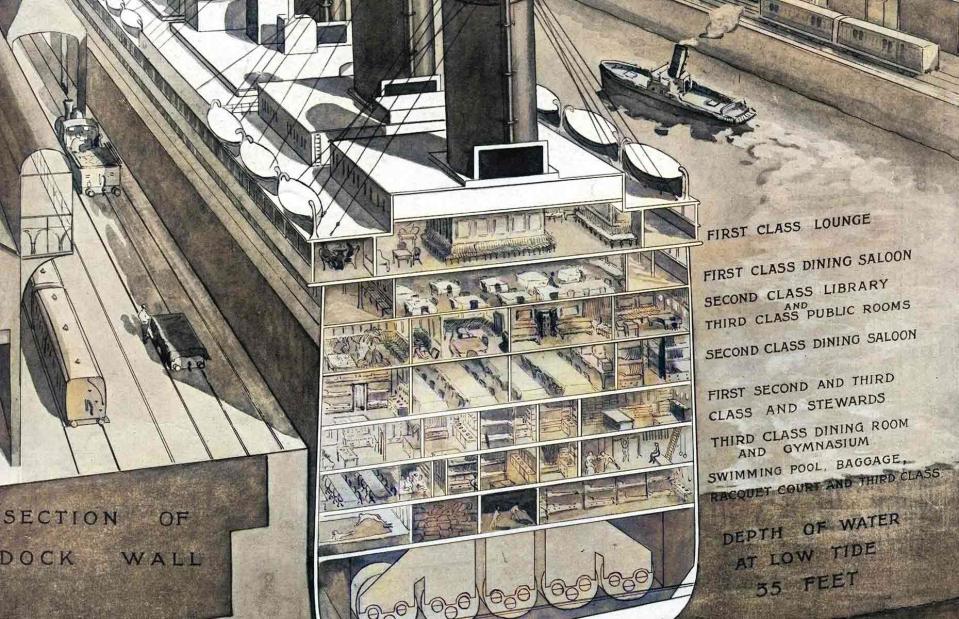
Chroma Collection / Alamy Stock Photo
The Titanic was made up of 10 decks, eight of which were accessible to the public. The topmost was the Boat Deck, where the lifeboats were housed and where first-class passengers could enter the grand staircase.
The A Deck, also known as the Promenade Deck, was reserved exclusively for first-class passengers and contained many first-class cabins. B Deck, or the Bridge Deck, housed six palatial staterooms with private promenades, two onboard restaurants, and the second-class entrance hall and smoking room.
A veritable city
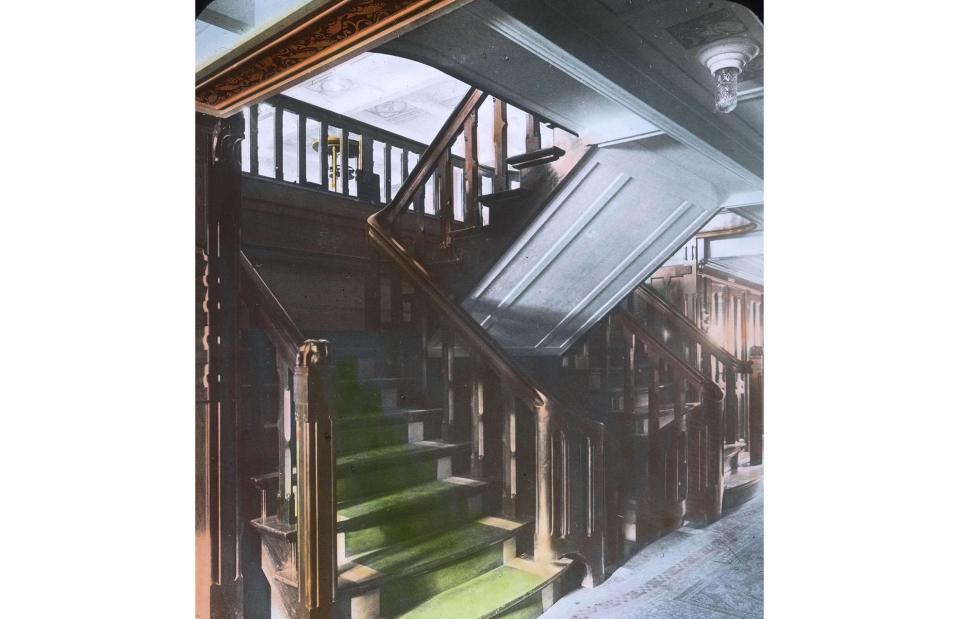
United Archives GmbH / Alamy Stock Photo
Moving deeper into the ship, you would find the C, D, E, F, and G decks, which housed further accommodation for all three classes of passengers, plus berths for the ship’s staff and crew. The ship was organised like a small city, with areas carefully designated for various activities, as well as various classes of passengers.
A long corridor called Crew Alleyway ran the length of E Deck and was used by the crew to get from one end of the ship to the other. It was nicknamed Scotland Road after the famous street in Liverpool where the ship was registered, because of the heavy foot traffic it attracted. The final two decks, only accessible to members of the crew, were the Orlop Deck and the Tank Top. The Orlop Deck was primarily used as cargo space, where passengers’ bulkier items and trunks could be stored for the duration of the journey.
Propulsion system
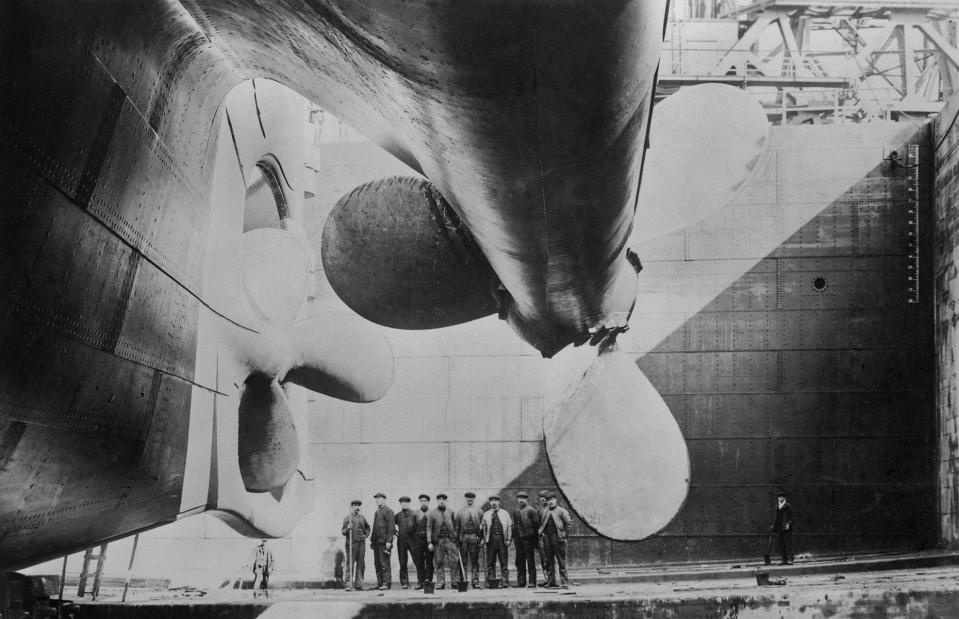
Glasshouse Images / Alamy Stock Photo
The Titanic’s propulsion was driven by three propellers, two of which were powered by two 30-foot steam engines, and the third by a turbine. The steam engines were fed by the ship’s 29 boilers, which in turn were powered by 159 furnaces. These furnaces guzzled 660 tonnes of coal a day, all of which needed to be shovelled by hand by a team of 176 firemen employed around the clock.
The Titanic’s maximum speed was 24 knots or 28 mph. She was believed to have been travelling at just under this speed when she collided with the iceberg. Of course, building a ship of this scale was both a difficult and dangerous undertaking. There were very few safety precautions in place to protect shipyard workers, and 246 injuries were recorded during the Titanic’s construction. There were also eight recorded fatalities, although only five names of the deceased are known.
Titanic costs
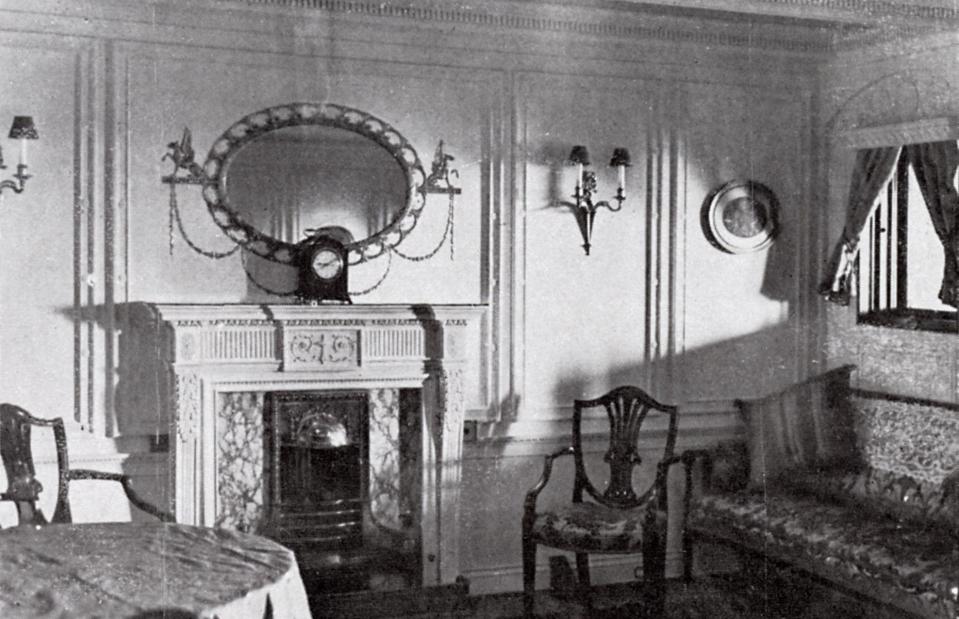
Chronicle / Alamy Stock Photo
At the end of 26 months, the 46,000-tonne ship had cost $7.5 million to complete, or about $237 million (£187m) in today's money.
The completed vessel, roughly the length of four city blocks, was held together by some three million rivets and had been built by the hands of more than 3,000 workers. The ship was then fitted with all the luxurious details synonymous with the White Star Line: plush carpeting, quality furniture and fabrics, Royal Doulton china, pianos, chandeliers, mahogany-panelled walls and a gold-leafed ceiling.
Ready to launch
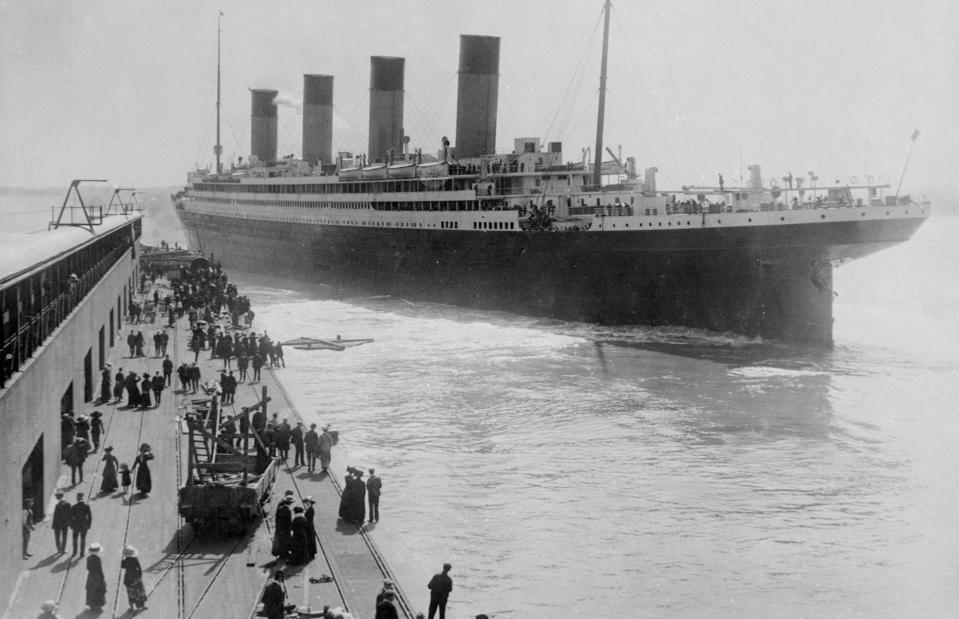
Chronicle / Alamy Stock Photo
With construction complete and the final fixtures and fittings installed, the Titanic launched on 31 May 1911. True to White Star Line tradition, there was no official christening of the ship; instead, she merely slid down the standing ways, which were coated with tallow, train oil and soap, and into the harbour to the cheers of spectators. Once afloat, RMS Titanic was then completed over the rest of the year and early 1912, before sailing to Southampton to pick up her crew and passengers.
The crew of the Titanic
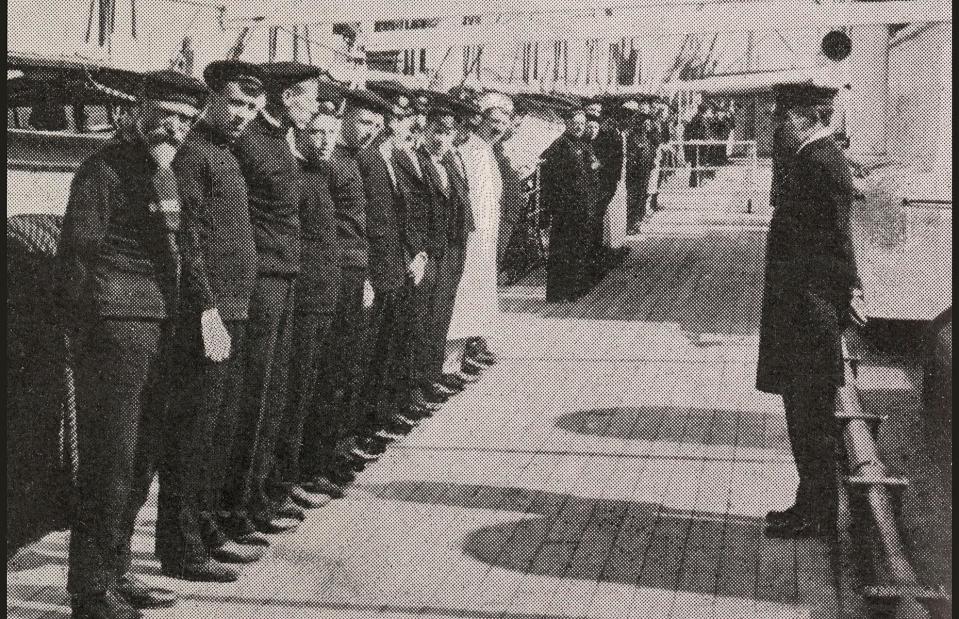
Chronicle / Alamy Stock Photo
The Titanic was crewed by more than 900 people and was captained by Edward J Smith, RD, RNR, a Commodore and Senior Captain of the White Star Line.
Of the roughly 900 crew members, including seamen, firemen, deckhands, waitstaff, cooks and engineers, an estimated 688 would not survive the sinking, Captain Smith included. The crew hailed largely from the United Kingdom, 724 from Southampton specifically.
The passengers
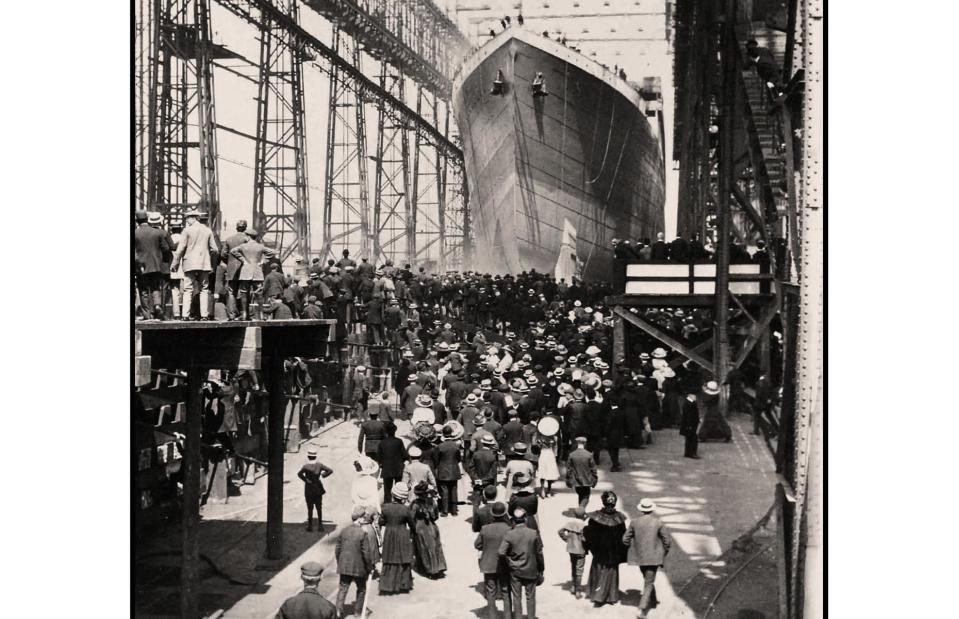
Shawshots / Alamy Stock Photo
The Titanic arrived at Southampton and welcomed aboard the vast majority of both her crew and passengers, more than half of whom were third class. While first-class passengers were looking forward to the novelty and prestige of taking part in the most luxurious transatlantic crossing to date, for many second and nearly all third-class passengers, the voyage meant much more: a chance to start a new life in America. The Titanic embarked on her maiden voyage on 10 April 1912.
A floating hotel
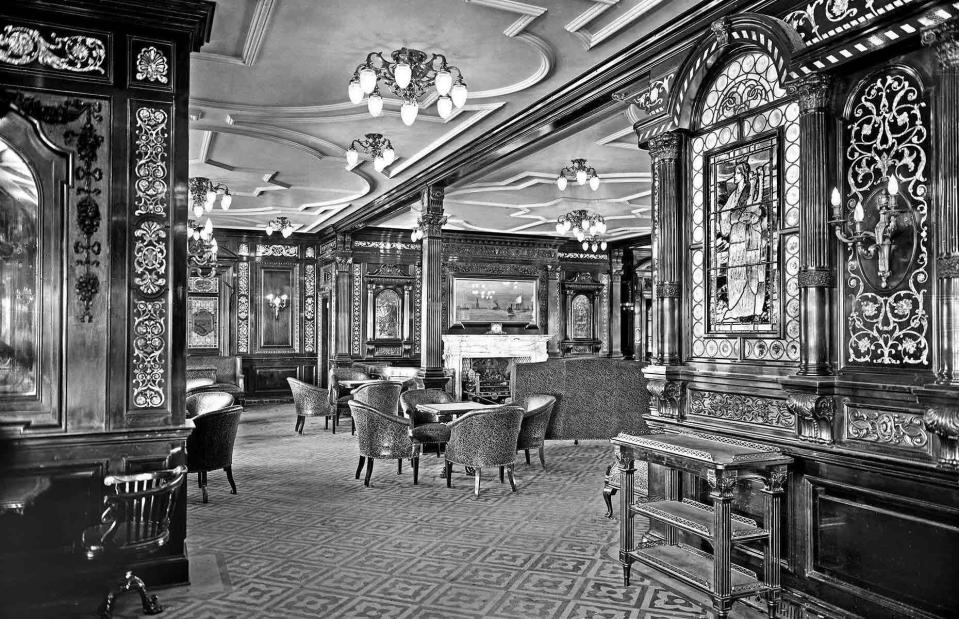
Shawshots / Alamy Stock Photo
Tremendous care and attention to detail were paid throughout the ship, leaving guests in no doubt that they were travelling on a luxury liner. In fact, the entire ship was designed to create the illusion of a luxurious floating hotel, dazzling passengers with its brilliant architectural design.
The vast majority of the woodwork, furniture, fabrics, fixtures and upholstery had been produced by master craftsmen in the various departments of the Harland & Wolff workshops, but a few outside manufacturers were contracted to produce certain items of furniture, particularly those used in the “special staterooms".
The grand staircase
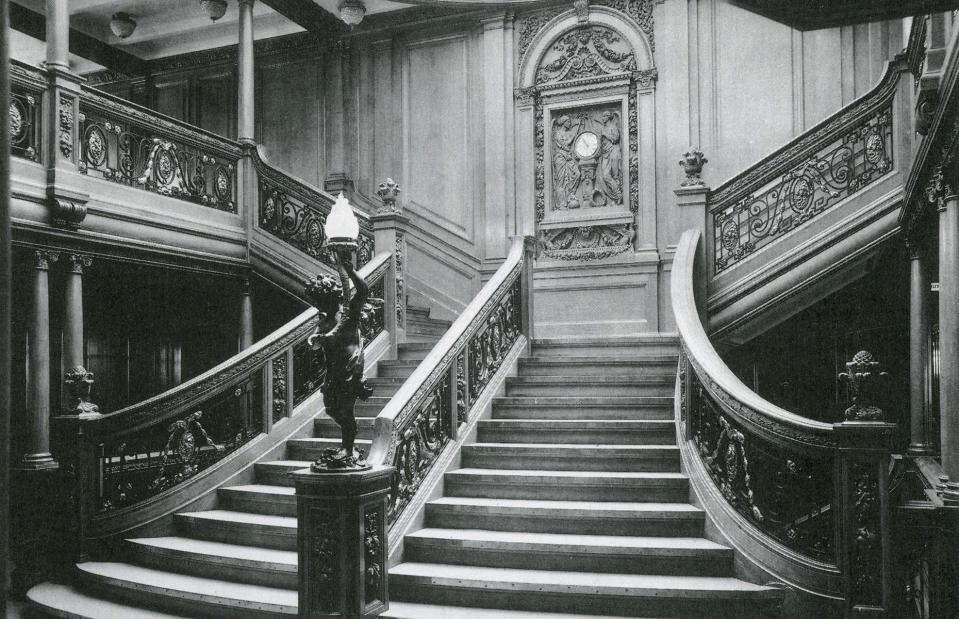
Science History Images / Alamy Stock Photo
Perhaps the most iconic element of the ship’s interior design, the grand staircase descended seven levels between Boat Deck and E Deck, and was the primary means of connection between decks for first-class passengers, as well as the port of entry to many of the public rooms.
Gilded details
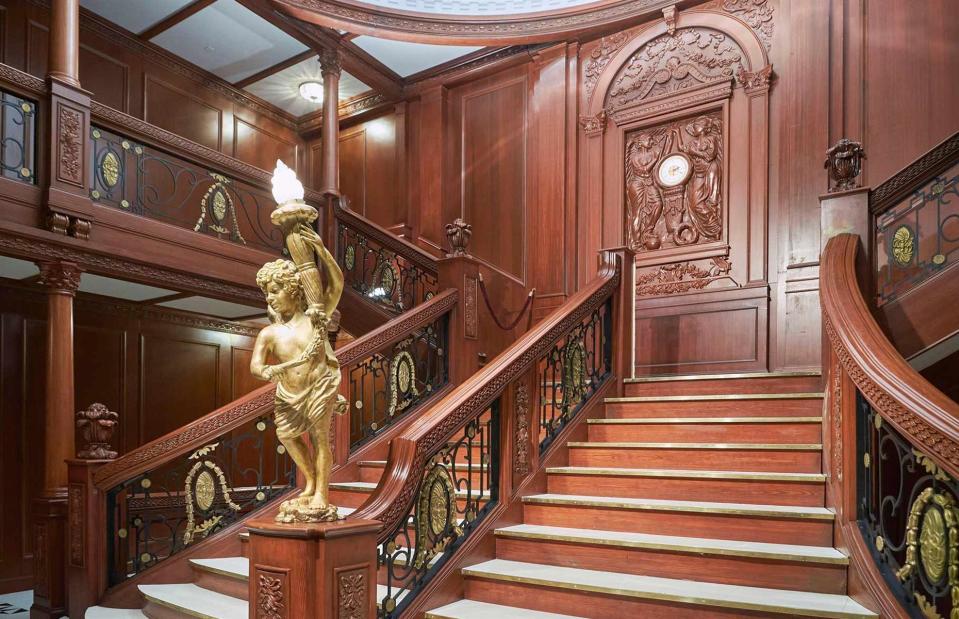
Hemis / Alamy Stock Photo
The staircase was constructed of solid Irish oak with elaborate Louis XIV-style wrought iron grilles in its banisters, and descended from an entrance hall panelled in the same polished oak and elaborately carved in the neoclassical style.
A gilded figure holding a torch illuminated the bottom of the staircase, bringing out the rich red tones of the wood. This life-size replica was built at the Titanic exhibition at the Porte de Versailles Exhibition Centre in France.
Luxurious public rooms
![<p>Bedford Lemere & Co / Wikimedia Commons [Public domain]</p>](https://s.yimg.com/ny/api/res/1.2/9OoLnfHVXFlqtRJl68dQBA--/YXBwaWQ9aGlnaGxhbmRlcjt3PTk2MDtoPTYxOQ--/https://media.zenfs.com/en/loveexploring_uk_835/7d83a9cccd803d715dc4706b3db1cea9)
Bedford Lemere & Co / Wikimedia Commons [Public domain]
Beyond the grand staircase was an assortment of opulent public rooms designed exclusively for first-class passengers. For social engagements, the ship offered both a 54-foot Jacobean-style reception room and a spacious lounge decorated in the Louis XV style with elaborate boiseries and appointed with comfortable armchairs and card tables.
For more secluded and gender-segregated activity, men could retreat to the Georgian-style, mahogany-panelled saloon room, while women could use the reading room.
Regal dining room
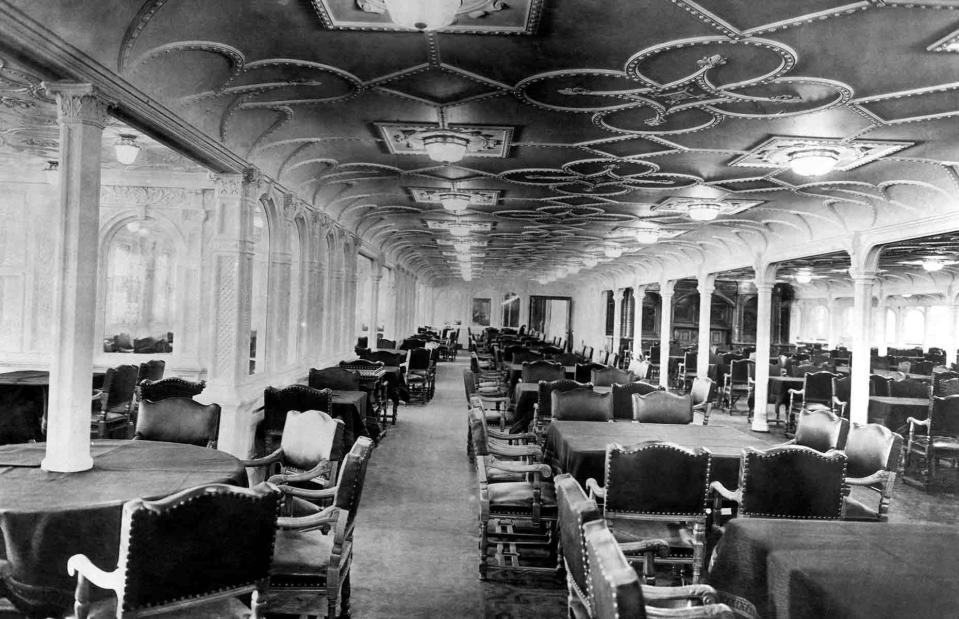
Everett Collection Historical / Alamy Stock Photo
Arguably the most opulent of the first-class spaces was the dining room which, at 114 feet in length, was the largest dining room ever seen on a ship. Impressively, it was capable of seating 532 passengers at a time.
Intricately designed in the Jacobean style with a marvellous engraved ceiling, the room was inspired by the interiors of Haddon Hall in England.
The Café Parisien
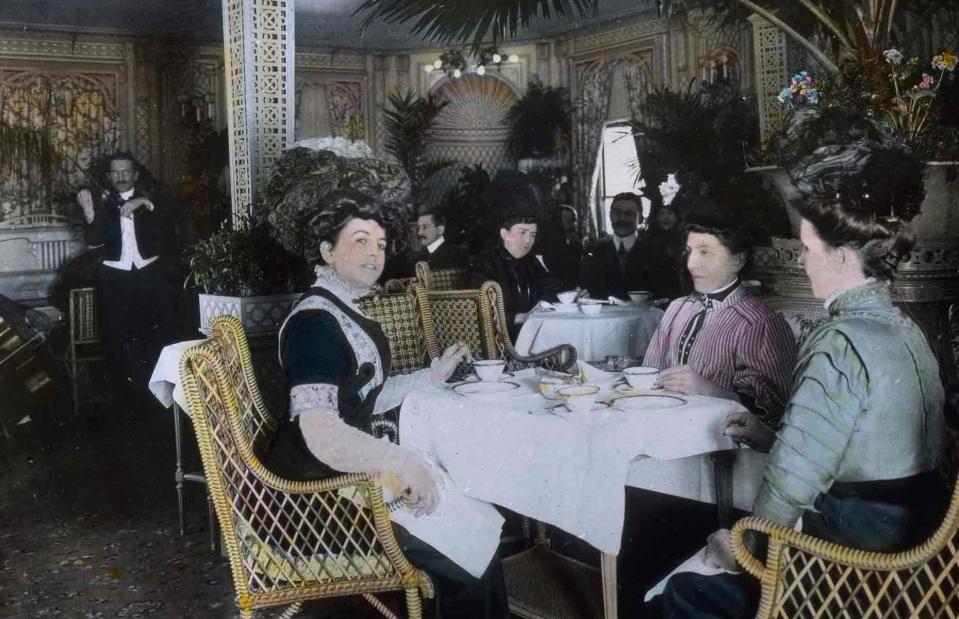
United Archives GmbH / Alamy Stock Photo
First-class passengers could also be served in the Café Parisien, a new addition that offered a dining service not included in the normal passage fare. The restaurant was equipped to seat up to 150 customers and served an à la carte menu designed by AP Luigi Gatti, an Italian restaurateur who operated several other establishments in London.
Decorated in Louis XVI style, the restaurant was panelled from floor to ceiling in French mahogany, intricately carved and accented with gold leaf.
Pictured here in this colourised image, first-class passengers enjoy tea time in the charming room.
Three classes of accommodation
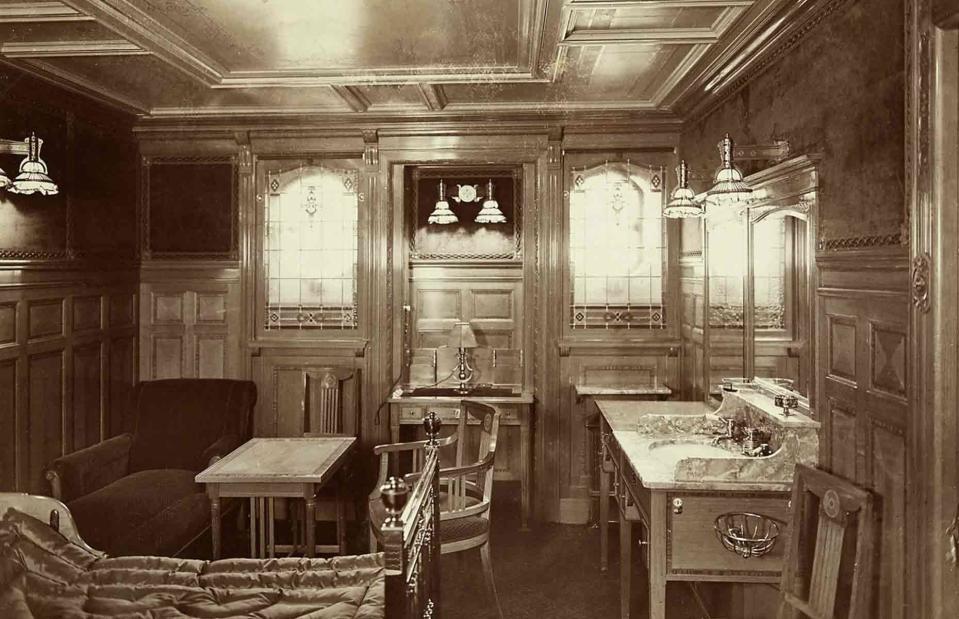
History collection 2016 / Alamy Stock Photo
There were three types of passenger accommodation aboard the Titanic corresponding to the different classes: first class, second class and third class.
The ship was distinctive in that she did not include steerage, a type of accommodation typical for low-income passengers and immigrants, which consisted of berths in large, open-plan dormitories with limited bathroom facilities and practically no privacy.
In accordance with their standards of luxury, the White Star Line wanted the Titanic to provide even their lowest-income passengers with an element of elegance.
Luxury first-class suites
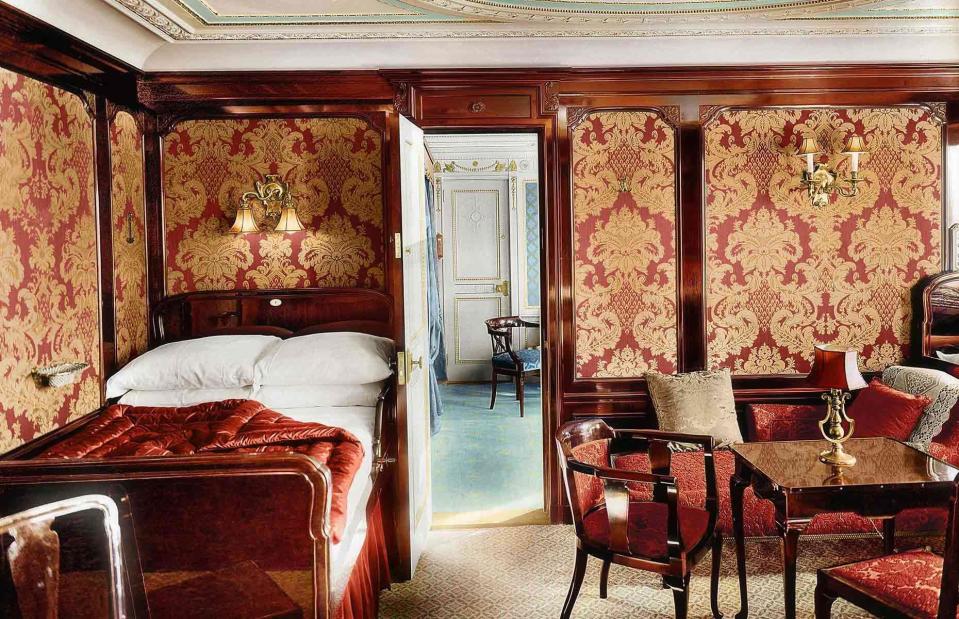
Ryan N / Alamy Stock Photo
In addition to the regular – though still opulent – first-class accommodation, extremely wealthy passengers could also book private suites. These were arranged to accommodate family groups, with adjoining bedrooms with en suites, dressing rooms, sitting rooms and servants’ quarters.
The most opulent suites on Titanic were the four parlour suites, two each on B and C Decks. The very finest accommodation available were the two B Deck Suites, advertised as Deluxe Suites or Promenade Suites because each included its own private promenade deck.
This colourised image, taken during the ship's fitting-out stage, depicts the Queen Anne-style stateroom of B-60, looking through to the Empire-style B-64 stateroom.
Ornate living spaces
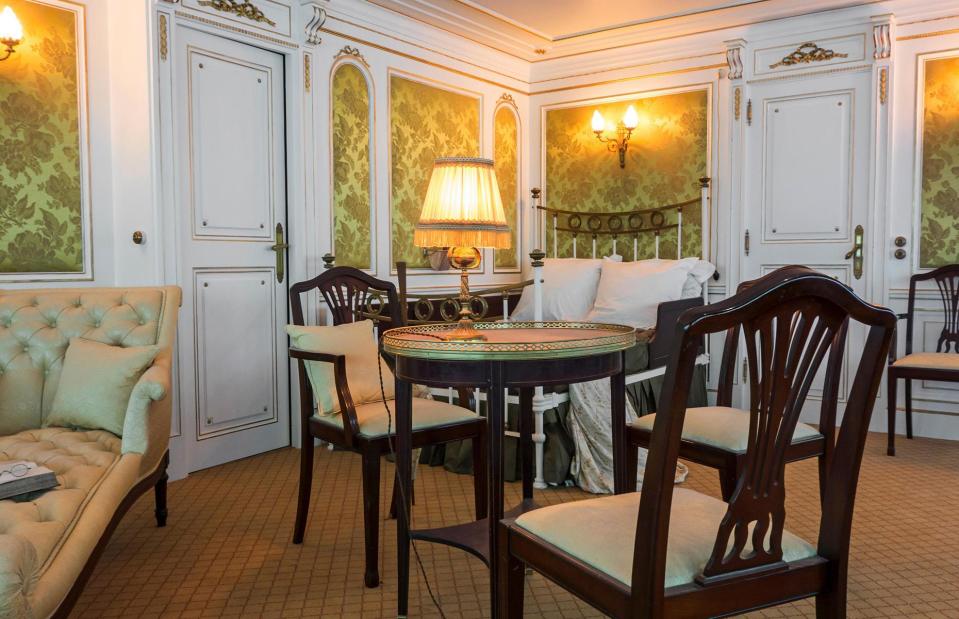
Arterra Picture Library / Alamy Stock Photo
As well as the luxury suites, the Titanic’s first-class accommodation included 39 private suites and 350 less expensive, single-bed cabins. The suites were appointed in a range of 11 different, period-specific styles ranging from Georgian to Italian Renaissance and boasted plush furnishings, Royal Doulton china and top-of-the-line toiletries.
This recreation of a first-class cabin, with its silk brocade wallpaper and gilded mouldings, gives you an idea of the scale of the grandeur.
Top-notch amenities
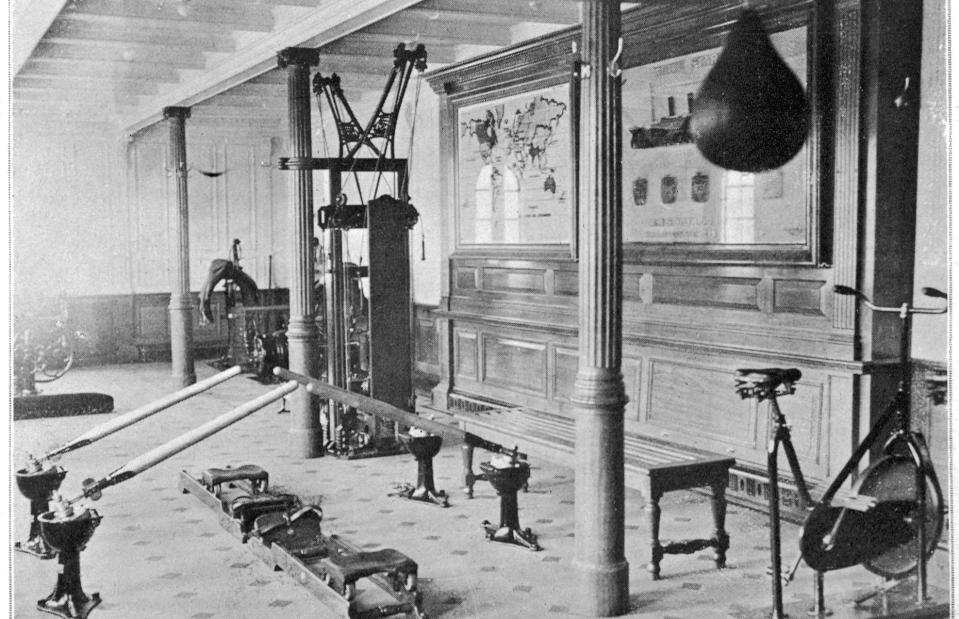
Chronicle / Alamy Stock Photo
With a first-class ticket came access to the ship's most exclusive amenities. Like a five-star hotel on the water, the ship offered its wealthiest guests the use of squash courts, Turkish baths and even a barber shop.
The state-of-the-art gymnasium is pictured here. Gender segregated, it was reportedly open for women between 9am and noon, while men were permitted between 2pm and 6pm.
State-of-the-art swimming pool
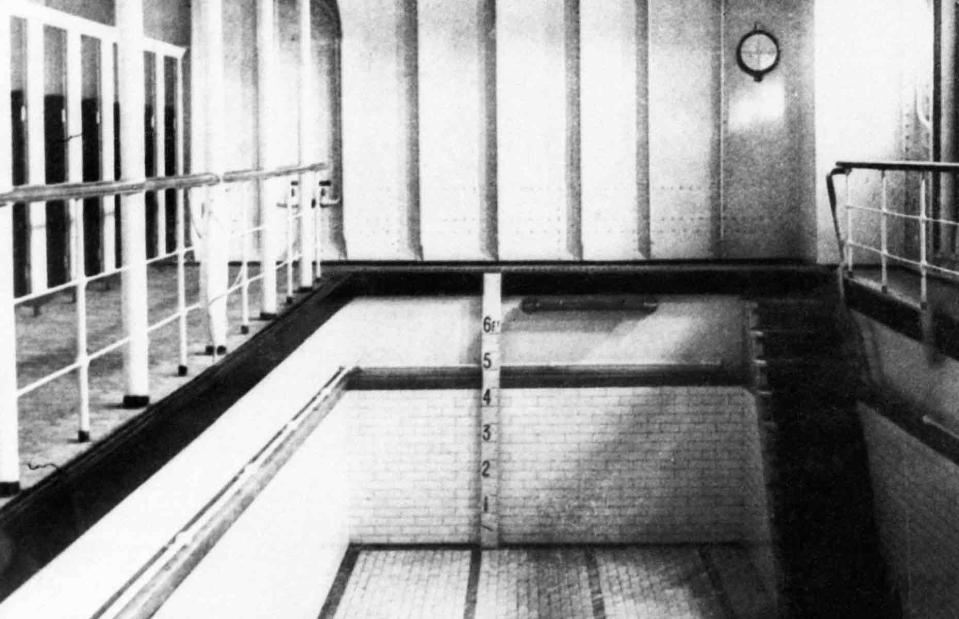
GRANGER - Historical Picture Archive / Alamy Stock Photo
However, the swimming pool, located on F Deck, was perhaps the most exciting of the first-class amenities. Something of a novelty, it was among the first heated saltwater pools to be installed on a ship.
The pool may have been a modest affair by modern standards – it measured 30 feet long by 14 feet wide – but back then it was considered state of the art. Thirteen changing cubicles and two shower stalls were also provided for the ship's keen bathers.
Comfortable second-class cabins
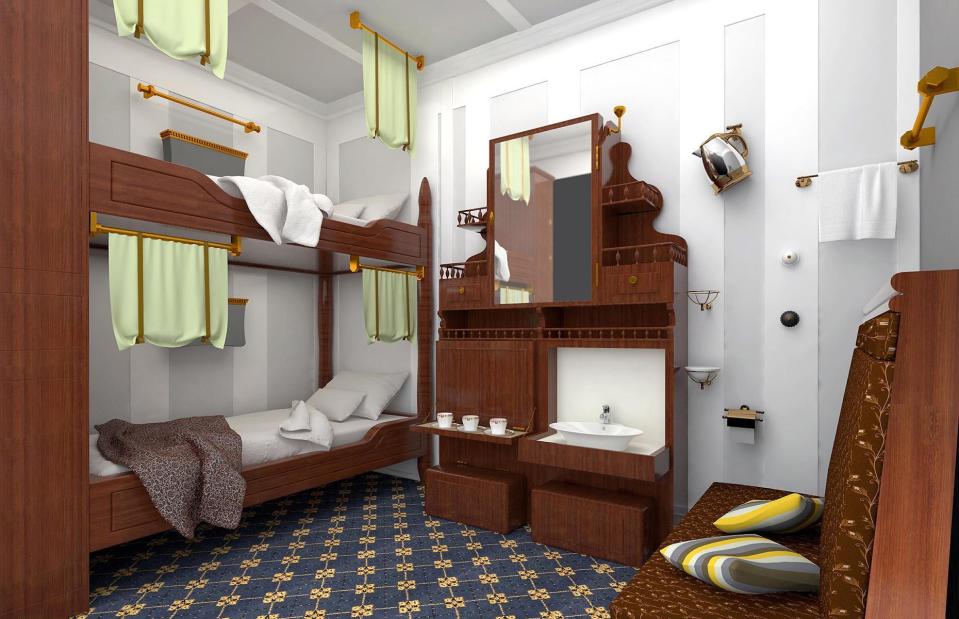
Imaginechina Limited / Alamy Stock Photo
While not quite as luxurious as first class, second-class cabins were still very comfortable, with white linoleum floors, oak-panelled walls and mahogany furniture.
This artist’s rendering, though differing slightly from what has been described, gives a good sense of the cabins’ layout. Second-class cabins did not offer private wash facilities, but did include compact washbasins which were manually supplied with hot and cold water by the steward.
In terms of public spaces, second-class passengers had access to a library, dining room and promenade deck.
Modest third-class cabins
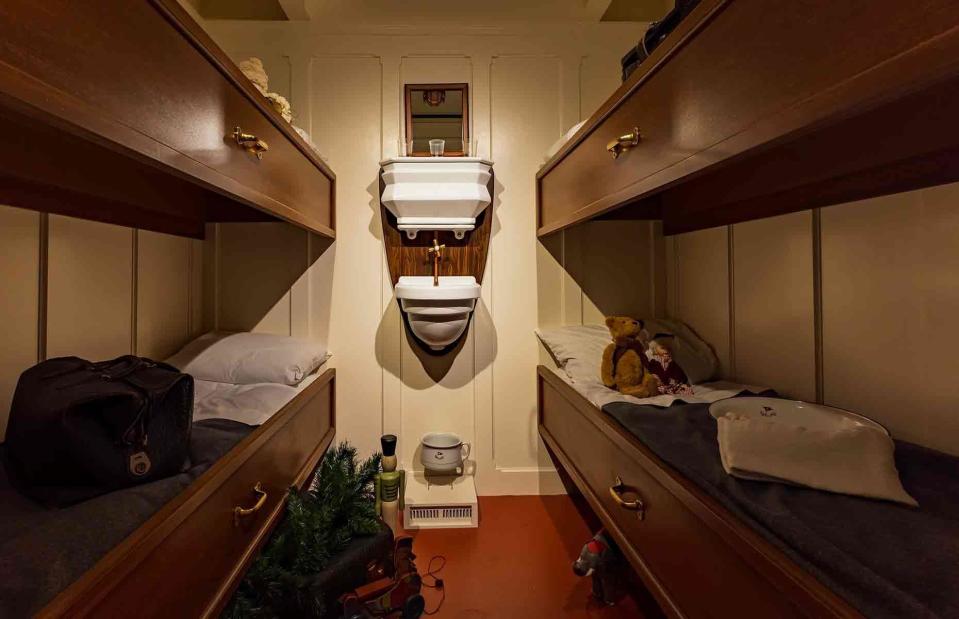
Kit Leong / Shutterstock
Third-class accommodation was the least expensive form of berth available on the Titanic and was largely occupied by European immigrants. Though substantially better in quality than many of the Titanic’s competing liners, third-class cabins were still very small and had limited amenities. They consisted of private cabins of up to 10 beds, with linoleum floors and pine-panelled walls painted white.
The cabins were housed in less desirable parts of the ship, where noises and vibrations from the engines would have caused a disturbance. Third-class passengers had access to a dining saloon and public recreational spaces.
Pictured here is a replica third-class cabin on display in the Titanic Museum in Branson, Missouri.
Top-of-the-line technology
![<p>Cliff1066 / Wikimedia Commons [CC BY 2.0 DEED]</p>](https://s.yimg.com/ny/api/res/1.2/APySh_4c0ErDcwPXAKuzFw--/YXBwaWQ9aGlnaGxhbmRlcjt3PTk2MDtoPTYxOQ--/https://media.zenfs.com/en/loveexploring_uk_835/855679f3c207bcfdbf2cdb582b059c62)
Cliff1066 / Wikimedia Commons [CC BY 2.0 DEED]
The Titanic was equipped with top-of-the-line technology, including radiotelegraph equipment leased to the White Star Line by the Marconi International Marine Communication Company, along with two of their employees, Jack Phillips and Harold Bride, to operate it.
The ship was also equipped with a state-of-the-art five-kilowatt rotary spark-gap transmitter that was capable of sending and receiving messages in Morse code. The transmitter was one of the most powerful in the world at the time, capable of broadcasting over a radius of 350 miles.
Safety features and failings
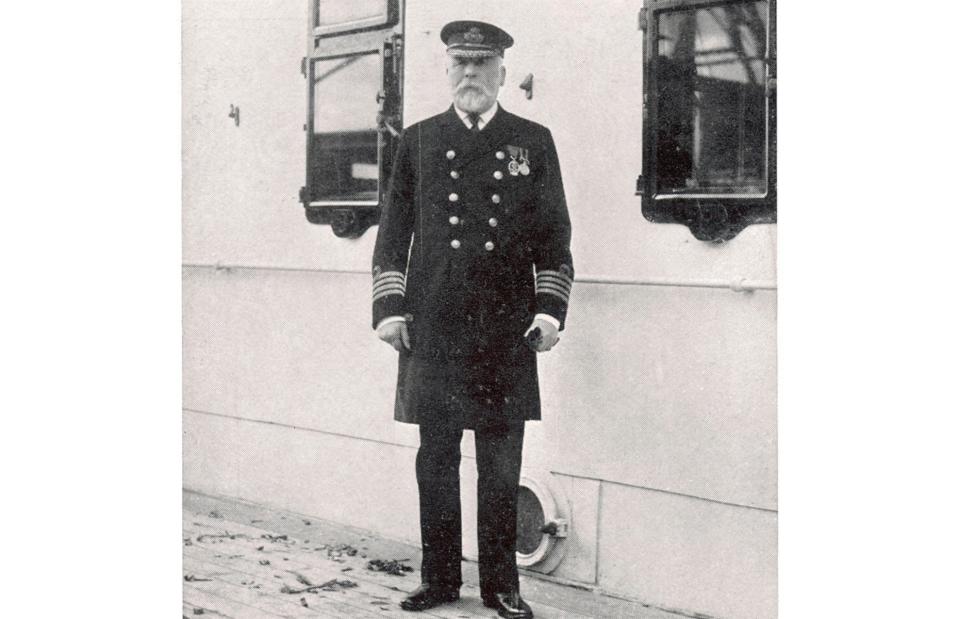
Chronicle / Alamy Stock Photo
While Marconi’s telegraph machine intercepted seven messages warning of icebergs in the area, the ship’s crew chose to ignore all of them, partly because they were already sending so many telegrams on behalf of wealthy passengers, and partly because Captain Smith (pictured here) was eager to show off the Titanic’s speed on her maiden voyage.
They continued to charge ahead at between 22 and 24 knots, the ship’s maximum speed.
The fateful collision
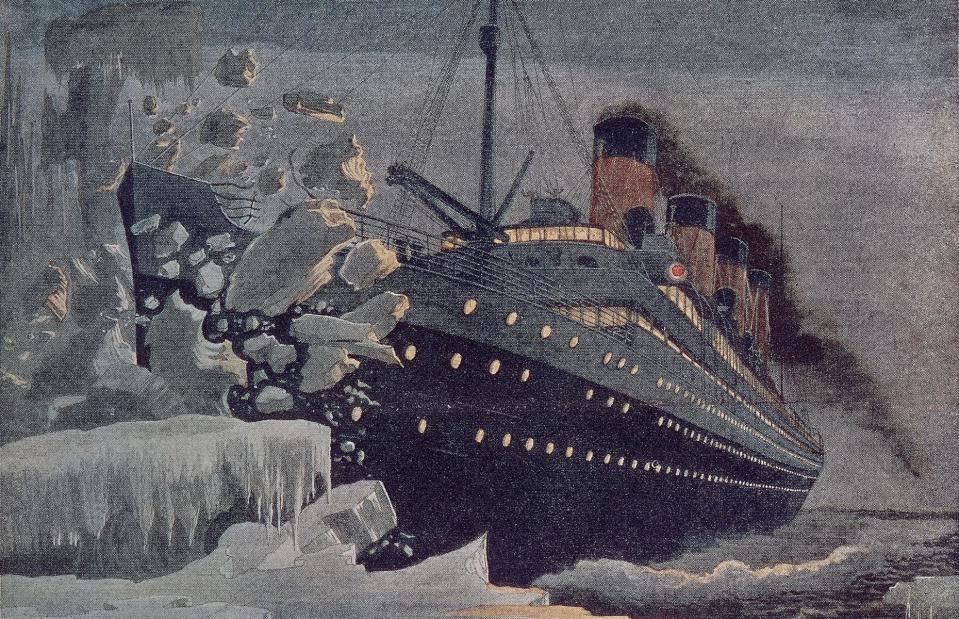
Album / Alamy Stock Photo
At approximately 11:40pm on 14 April, the Titanic collided with an iceberg, which punctured a series of holes in the starboard side of the ship below the waterline.
The hull plates buckled and separated, allowing water to pour in. Five of the ship’s 16 watertight compartments were flooded, with a sixth partially compromised. Eventually, the hull snapped into two sections, between the third and the fourth funnels.
20 lifeboats
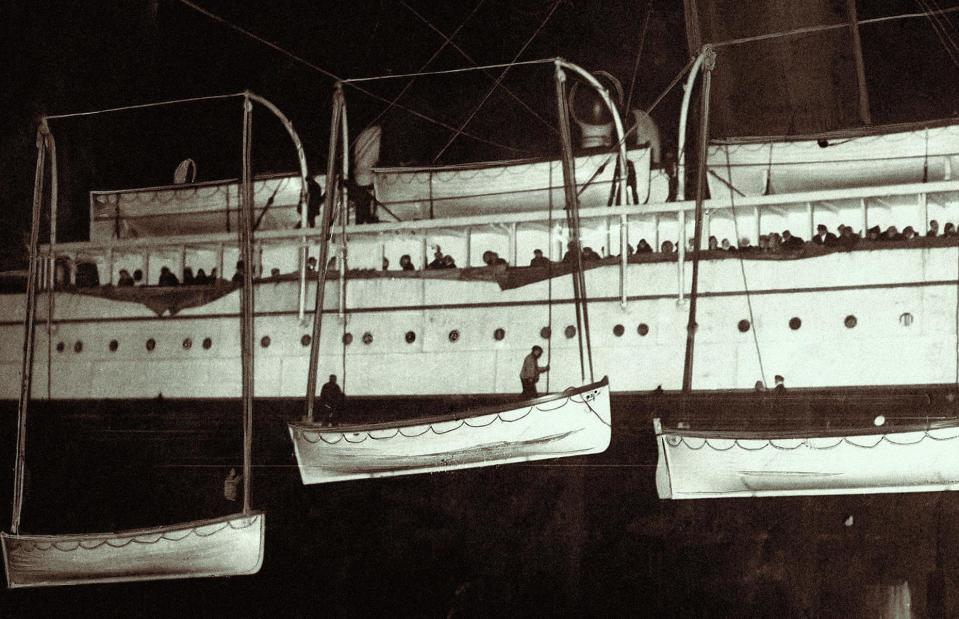
World of Triss / Alamy Stock Photo
While Carlisle’s original design for the ship would have allowed for 32 lifeboats – what later became known as the Welin Quadrant Davit system – the White Star Line opted to reduce this number down to 20, arguing that any more would crowd the deck space for first-class passengers.
The result was that the Titanic only carried enough lifeboats to accommodate 1,178 people, just over half of the total number of people on board.
"We are going down”
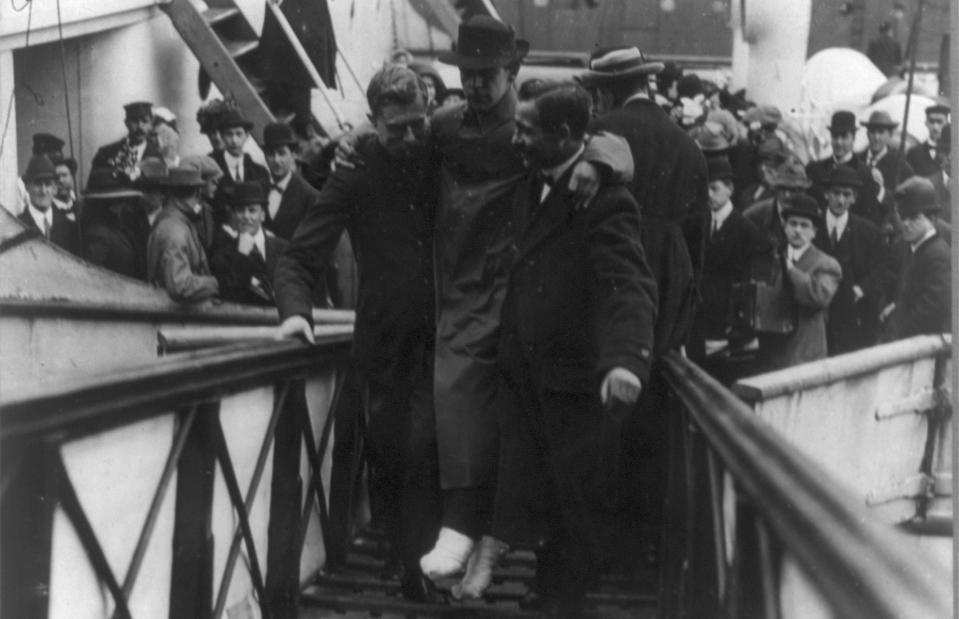
World History Archive / Alamy Stock Photo
After the collision, the Marconi-invented distress call, or CQD, was blasted out across the cold seas, followed by a series of messages dispatched by the wireless operators to any nearby ships. "Come at once. We have struck a berg. It's a CQD, old man," was sent to the nearby Carpathia, while the Frankfurt, a German ship, received this message: "We have struck an iceberg and sinking by the head.”
The multiple CQD distress calls were later followed by an SOS – the first use of this new form of distress signal. The operators joked that they may as well try out the new dispatch, as they would likely never have the opportunity again.
As the ship continued to sink, telegraph operators Phillips and Bride (pictured here being carried ashore having survived the sinking despite serious injury) desperately tried to contact nearby ships for rescue, but none would make it in time.
What sank the Titanic?
![<p>Willy Stöwer / Wikimedia Commons [Public domain]</p>](https://s.yimg.com/ny/api/res/1.2/sZCFtDqjJ2c258eveK.dqw--/YXBwaWQ9aGlnaGxhbmRlcjt3PTk2MDtoPTYxOQ--/https://media.zenfs.com/en/loveexploring_uk_835/2f919211035bf0d535bfa33e077db7b5)
Willy Stöwer / Wikimedia Commons [Public domain]
The Titanic sank at approximately 2:20am the morning of 15 April. There were 1,503 deaths, comprised of 815 passengers and 688 crew members.
In the tremendous amount of structural analysis that followed the tragedy, it was determined that no one element had caused the ship to sink, but rather the combination of numerous factors. Had the Titanic not ignored the ice warnings, had she not been travelling at top speed at the time of collision or had she been engineered so that all her watertight compartments had bulkhead dividers that went all the way to the ceiling, the ship might never have sunk.
A preventable tragedy
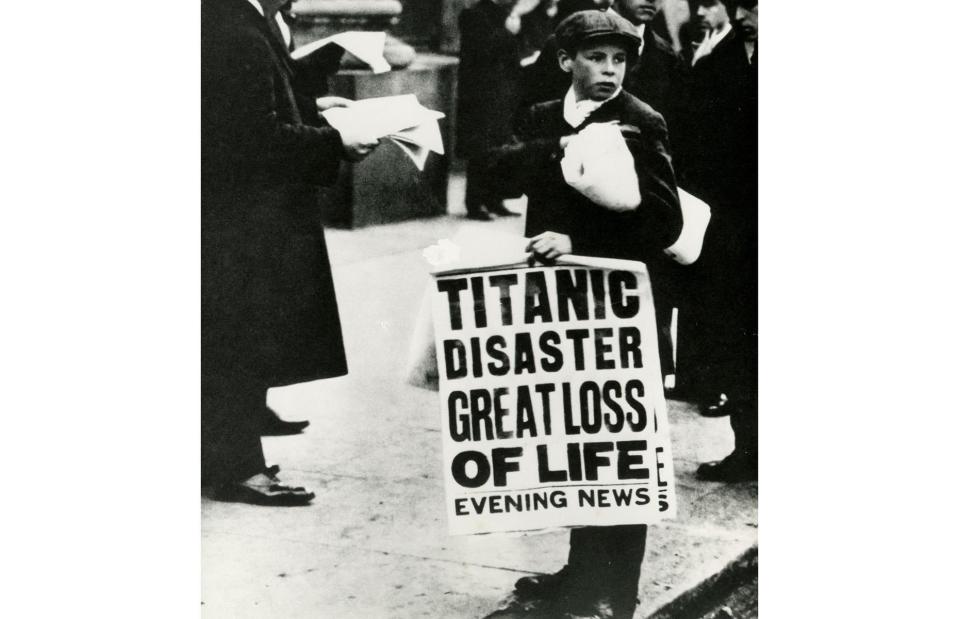
Universal Images Group North America LLC / Alamy Stock Photo
However, more preventable than the collision itself was the galling loss of life that followed. Not only was the Titanic carrying half as many lifeboats as she needed to accommodate all those onboard, but nearly all of these lifeboats were released with half as many people in them as they were equipped to carry because the ship’s crew had never been properly instructed in how to load them.
A lasting legacy
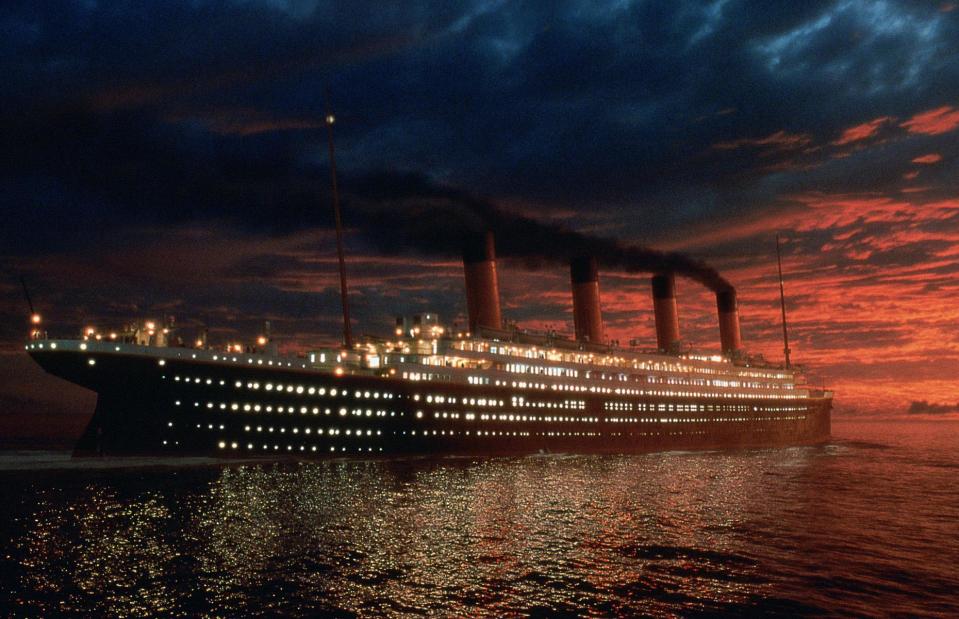
ScreenProd / Photononstop / Alamy Stock Photo
While nothing can be done to alter the past, the tragic sinking of the Titanic has at least served as a lesson in many ways. In 1914, the International Convention for the Safety of Life at Sea was established, which still governs maritime safety today.
There were also numerous changes to industry recommendations regarding lifeboats and double-bottom hull design, as well as the implementation of a 24-hour radio watch so as not to miss distress calls. Just as the Titanic’s legacy lives on, so too do her lessons.


